Photo

A Blend of Tradition and Modernity
Immerse yourself in the vibrant atmosphere of Kazanlak, where ancient Bulgarian culture harmoniously coexists with modern amenities. From quaint taverns and elegant restaurants to trendy bistros and charming cafes along Iskra Street, there’s something to delight every visitor. Explore souvenir shops showcasing the latest works of Kazanlak artisans, blending cherished ancient traditions with contemporary flair.
The Enchanting Valley of Roses
Nestled amidst the Black Sea, between Europe and Asia, lies Bulgaria—a patch of paradise known as the Valley of Roses. Protected by majestic mountains and adorned with blooming flowers, this idyllic region boasts hot mineral springs in Pavel Banya and Ovoshtnik, enhancing its allure. Kazanlak, renowned for its roses and artists, reflects a rich history shaped by diverse cultures, including Thracians, Romans, and Ottoman Turks Istanbul Cultural Tours.
Industrial Hub and Rose Capital
Beyond its cultural heritage and tourism, Kazanlak thrives as an industrial hub. It houses Bulgaria’s prominent facilities for hydraulic and pneumatic machinery, including the Arsenal Plant—one of the country’s largest manufacturing facilities. Additionally, major textile and silk production plants contribute to the town’s economic vitality. Kazanlak pulsates with life, serving as Bulgaria’s dynamic nexus, bridging the past with the future, tradition with modernity.
0 notes
Photo
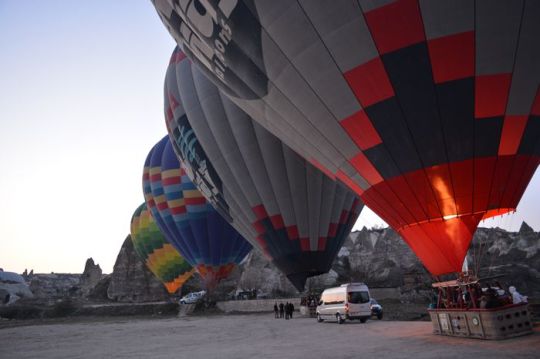
Diplomatic Impotence The Futility of Seeking Justice
Acknowledging the Failures
When Mr. Schuyler confronted the Governor of Philippopolis about the reprehensible actions of the Mudir, he received a feeble response. The governor admitted knowledge of the Mudir’s wrongdoing but claimed there was no one better suited to replace him. This grim reality reflects a broader trend of impunity for perpetrators of heinous crimes. Achmet Aga, notorious for the massacre in Batak, along with other equally infamous figures like the destroyer of Perushtitza and the arsonist Tossum Bey, have not faced punishment. Instead, they’ve been rewarded, decorated, and even promoted for their atrocities.
Diplomatic Paralysis
Sadly, diplomatic efforts have proven impotent in addressing these injustices. Sir Henry Elliot’s tepid response in Constantinople underscores the lack of belief in the severity of the atrocities. Consequently, any representations made to the Porte are likely to be met with superficial promises and empty assurances. The cycle continues as the Porte issues meaningless reforms on paper, satisfying diplomats without effecting real change Bulgaria Tours.
The Grim Reality
The truth is stark: reform is a distant dream in an empire where few recognize its necessity, and fewer still are willing to implement it. The Mutassarif of Philippopolis spoke candidly when he confessed to the absence of suitable replacements for corrupt officials. Even if reforms were feasible, the will to enact them is sorely lacking. The entrenched bureaucracy and indifference to the suffering of the populace ensure that justice remains elusive.
A Call for Accountability
As we grapple with the grim reality of diplomatic impotence and bureaucratic inertia, it becomes clear that change will not come from within. The international community must hold perpetrators accountable and pressure the Ottoman Empire to enact meaningful reforms. Only through sustained advocacy and unwavering commitment to justice can we hope to address the rampant impunity and bring an end to the cycle of violence and oppression.
0 notes
Photo
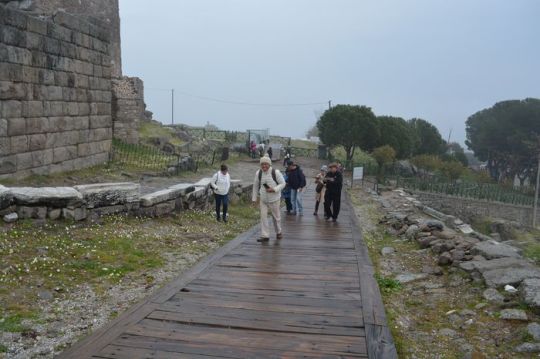
The Desolate Valley of Batak
A Silent Sentinel
The once-bustling sawmill now stands silent, a testament to the desolation that has befallen this picturesque valley. Where once herds of sheep and cattle grazed, now lies an eerie emptiness, as if the very earth itself mourns the absence of life.
A Panoramic View
Ascending the ridge, we were greeted with a breathtaking panorama of the surrounding mountains, their rugged peaks stretching in a circular embrace around the valley below. Deep hollows and ravines crisscrossed the landscape, creating a scene reminiscent of an otherworldly moonscape Private Guide Turkey.
The Village Below
In the depths of one such hollow lay the village of Batak, a mere speck on the vast canvas of nature. Though seemingly close, our guide warned us of the deceptive distance that still lay ahead. Fields of ripe wheat and rye sprawled across the hillsides, their golden hues a stark contrast to the desolation that surrounded them.
A Haunting Discovery
Approaching the village, our attention was drawn to a group of dogs perched on a slope overlooking the town. Venturing closer, we stumbled upon a chilling sight: scattered debris and the remnants of walls, and amidst them, a haunting discovery—a human skull, weathered and worn, a silent witness to the tragedies that had befallen this forsaken place.
Echoes of Despair
As we rode through the desolate landscape of Batak, we couldn’t help but feel the weight of its silent sorrow. The fields, once teeming with life, now lay abandoned, the harvest left to rot in the soil. In the midst of this desolation, the discovery of the human skull served as a poignant reminder of the untold horrors that had unfolded here, echoing through the ages as a testament to the resilience of the human spirit in the face of unimaginable tragedy.
0 notes
Photo

Bulgarian Cultural History
Enduring Challenges and Resilience
Under the Byzantine Yoke (1018)
In 1018, Bulgaria fell under Byzantine rule, dealing a severe blow to the emerging Bulgarian language. Over 125 years of development as a state and church language was interrupted as the Byzantine government reintroduced the Greek language for literary purposes in Bulgaria, affecting both church and state affairs.
Second Bulgarian Kingdom (1187-1396)
Despite the challenges during the Second Bulgarian Kingdom, spanning from 1187 to 1396, where the influence of Byzantium persisted, significant cultural contributions were made. Numerous books were written and copied in the Bulgarian language during this period, including “Istoriki,” a historical book summarizing events from Abraham to the 12th century. Patriarch Evtimi, a key cultural figure, established a school in Tirnovo to promote Bulgarian literature, particularly focusing on biographies of saints Private Istanbul Tour.
Under the Turkish Yoke (1396)
Bulgaria fell under Turkish rule in 1396, resulting in a halt to various aspects of national cultural life. Writing and translation into Bulgarian were suppressed, and many writers faced persecution, with books being destroyed. However, Bulgarian literature persisted in exile. Grigori Tsamblak, elected Metropolitan of Kiev in 1414, authored numerous theological books in Bulgarian, preserving the language’s official status north of the Danube, in present-day Romania. Konstantin Kostenechki, another writer-in-exile, founded a school in Serbia and emphasized a phonetic approach to the Bulgarian alphabet in his grammar.
Double Yoke: Turkish Rule and Greek Influence (1396-1878)
From 1396 to 1878, Bulgaria endured a double yoke—the political dominance of the Turks and the spiritual influence of the Greeks. This period posed a threat to the extinction of Bulgarian national identity. However, in 1762, Father Paisi of Athos sparked a national awakening with his Sloveno-Bulgarian History, instilling pride in the Bulgarian past and preventing assimilation by others. The deep feelings of national identity cultivated during this period played a crucial role in preserving Bulgaria’s cultural heritage.
0 notes
Photo
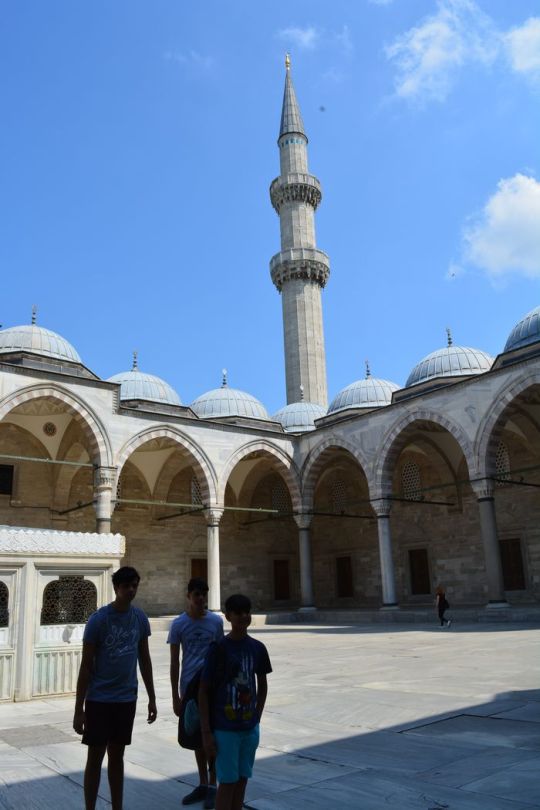
Bulgarian Cultural History
Enduring Challenges and Resilience
Under the Byzantine Yoke (1018)
In 1018, Bulgaria fell under Byzantine rule, dealing a severe blow to the emerging Bulgarian language. Over 125 years of development as a state and church language was interrupted as the Byzantine government reintroduced the Greek language for literary purposes in Bulgaria, affecting both church and state affairs.
Second Bulgarian Kingdom (1187-1396)
Despite the challenges during the Second Bulgarian Kingdom, spanning from 1187 to 1396, where the influence of Byzantium persisted, significant cultural contributions were made. Numerous books were written and copied in the Bulgarian language during this period, including “Istoriki,” a historical book summarizing events from Abraham to the 12th century. Patriarch Evtimi, a key cultural figure, established a school in Tirnovo to promote Bulgarian literature, particularly focusing on biographies of saints Private Istanbul Tour.
Under the Turkish Yoke (1396)
Bulgaria fell under Turkish rule in 1396, resulting in a halt to various aspects of national cultural life. Writing and translation into Bulgarian were suppressed, and many writers faced persecution, with books being destroyed. However, Bulgarian literature persisted in exile. Grigori Tsamblak, elected Metropolitan of Kiev in 1414, authored numerous theological books in Bulgarian, preserving the language’s official status north of the Danube, in present-day Romania. Konstantin Kostenechki, another writer-in-exile, founded a school in Serbia and emphasized a phonetic approach to the Bulgarian alphabet in his grammar.
Double Yoke: Turkish Rule and Greek Influence (1396-1878)
From 1396 to 1878, Bulgaria endured a double yoke—the political dominance of the Turks and the spiritual influence of the Greeks. This period posed a threat to the extinction of Bulgarian national identity. However, in 1762, Father Paisi of Athos sparked a national awakening with his Sloveno-Bulgarian History, instilling pride in the Bulgarian past and preventing assimilation by others. The deep feelings of national identity cultivated during this period played a crucial role in preserving Bulgaria’s cultural heritage.
0 notes
Photo

Bulgarian Cultural History
Enduring Challenges and Resilience
Under the Byzantine Yoke (1018)
In 1018, Bulgaria fell under Byzantine rule, dealing a severe blow to the emerging Bulgarian language. Over 125 years of development as a state and church language was interrupted as the Byzantine government reintroduced the Greek language for literary purposes in Bulgaria, affecting both church and state affairs.
Second Bulgarian Kingdom (1187-1396)
Despite the challenges during the Second Bulgarian Kingdom, spanning from 1187 to 1396, where the influence of Byzantium persisted, significant cultural contributions were made. Numerous books were written and copied in the Bulgarian language during this period, including “Istoriki,” a historical book summarizing events from Abraham to the 12th century. Patriarch Evtimi, a key cultural figure, established a school in Tirnovo to promote Bulgarian literature, particularly focusing on biographies of saints Private Istanbul Tour.
Under the Turkish Yoke (1396)
Bulgaria fell under Turkish rule in 1396, resulting in a halt to various aspects of national cultural life. Writing and translation into Bulgarian were suppressed, and many writers faced persecution, with books being destroyed. However, Bulgarian literature persisted in exile. Grigori Tsamblak, elected Metropolitan of Kiev in 1414, authored numerous theological books in Bulgarian, preserving the language’s official status north of the Danube, in present-day Romania. Konstantin Kostenechki, another writer-in-exile, founded a school in Serbia and emphasized a phonetic approach to the Bulgarian alphabet in his grammar.
Double Yoke: Turkish Rule and Greek Influence (1396-1878)
From 1396 to 1878, Bulgaria endured a double yoke—the political dominance of the Turks and the spiritual influence of the Greeks. This period posed a threat to the extinction of Bulgarian national identity. However, in 1762, Father Paisi of Athos sparked a national awakening with his Sloveno-Bulgarian History, instilling pride in the Bulgarian past and preventing assimilation by others. The deep feelings of national identity cultivated during this period played a crucial role in preserving Bulgaria’s cultural heritage.
0 notes
Photo
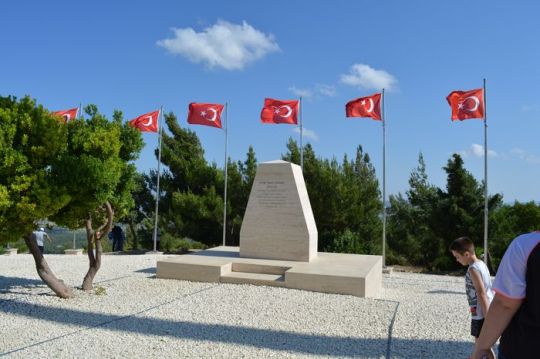
Economic Challenges and Political Instability (1994-1997)
Fragility and Failures of the Berov Government
The new government, led by Prof. Lyuben Berov, faced significant challenges in the mid-1990s, including economic reforms, privatization, corruption, and organized crime. However, the administration proved fragile and struggled to address these pressing issues. The anticipated transition to a market economy increasingly seemed like an illusion amid growing social tension. Factionalism emerged within the two major parliamentary groups, the Bulgarian Socialist Party (BSP) and the Union of Democratic Forces (UDF). Dismissals in the army and police, coupled with a lack of financial support for sports, gave rise to “groupings of force”—semi-criminal organizations linked to various business lobbies. The Berov Cabinet lost parliamentary support and resigned in October 1994, leading to the appointment of a provisional government until extraordinary parliamentary elections could be held. Five years after democratic changes, some began to express nostalgia for the communist past Guided Turkey Tours .
Socialists’ Resurgence and Videnov’s Troubled Leadership
In December 1994, the Socialists claimed a decisive victory in parliamentary elections, forming a new government with the young leader Zhan Videnov at the helm. Over the next two years, Videnov and his cabinet faced a series of challenges, and their attempts to address urgent matters proved inefficient. Inflation rates soared, banks went bankrupt, a grain shortage emerged, and corruption and crime continued to escalate. The era witnessed a proliferation of “financial pyramids,” which exploited trusting Bulgarian citizens, resembling scenes from a Western movie. The government failed to protect citizens from unscrupulous individuals operating as “pharaohs,” leading to widespread disillusionment. Many lost hope and their life savings amid the economic turmoil. During Videnov’s rule, the USD/BGL exchange rate surged from 50 levs per dollar in the fall of 1994 to an alarming 3,000 levs per dollar in January 1997.
0 notes
Photo
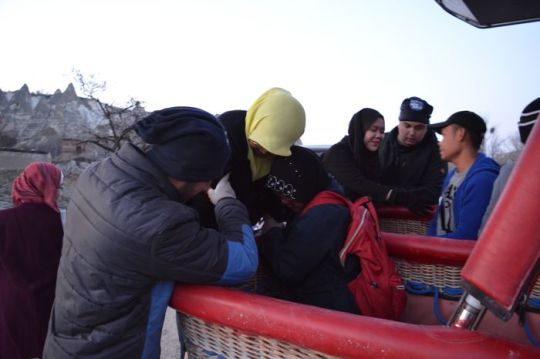
Villages in the Grip of Agony
A Chorus of Despair
This article delves into the haunting echoes of despair reverberating through Bulgarian villages like Otluk-kui, Batak, and Klissura. The cries of the tormented, the heartbroken sobs of women and children, paint a devastating picture of misery that transcends individual villages, encapsulating the grim reality faced by more than a hundred Bulgarian communities.
A Wail of Despair
Otluk-kui, a microcosm of anguish, echoed with the cries of despair as we departed. Three or four hundred voices intertwined in a symphony of misery, foretelling a future of increased maltreatment once our fleeting presence vanished. The prevailing conditions in Otluk-kui mirror the plight of numerous villages, setting the stage for a narrative of misery too horrifying to confront with equanimity.
Desperation Across Villages
The harrowing state of Otluk-kui, Batak, and Klissura unfolds as a reflection of more than a hundred Bulgarian villages ensnared in the same web of suffering. The profound misery, an indescribable horror, leaves an indelible mark on those who bear witness. The lamentations, heartbroken sobs, and wretched faces of women and children create an immersive tableau of despair Private Tours Bulgaria, haunting the conscience of anyone touched by these tales.
A Looming Tragedy
The vivid imagery of the wretched, haggard faces and the heart-wrenching sobs linger, becoming an unshakable presence in the mind. These faces, now etched like spectres, serve as poignant reminders of the impending catastrophe. Disease, hunger, famine, and cold, the silent executioners, stand ready to complete the tragic narrative left incomplete by the savagery of the sabre.
Rescuing Villages from the Abyss
As the haunting spectres of suffering encroach upon the villages, a call to action becomes imperative. The global community must not remain indifferent to the plight of these communities teetering on the edge of devastation. It is a collective responsibility to extend a lifeline, to ensure that disease, hunger, and despair do not consign these villages to a fate as spectres of a bygone agony.
0 notes
Photo

Avrat Alan's Quiescent Rebellion
Deconstructing the Myth A Bloodless Suppression
In the mosaic of the Balkan rebellion, Avrat-Alan emerges as a critical chapter, challenging the prevailing narrative surrounding the alleged necessity of brutal Turkish repression. The absence of any defense or resistance, coupled with the startling revelation that not a single Turk lost their life in quelling the revolt south of the Balkans, casts a glaring spotlight on the exaggerated assertions about the rebellion’s perilous nature.
A Tale of Unsubstantiated Fears The Mythical Menace of the Rebellion
The unequivocal fact that no Turkish lives were sacrificed in suppressing the rebellion punctures the inflated rhetoric of those defending the Turkish forces. It dismantles the argument that the alleged impossibility of deploying regular troops necessitated the call to arms for the Mussulman population. Avrat-Alan becomes a poignant counterpoint to the justifications offered by apologists of the Ottoman Empire, laying bare the feebleness and irrationality of the entire insurrection.
The hollowness of the rebellion’s threat is laid bare by this single, irrefutable truth. The narrative spun around the need for drastic measures collapses under the weight of this evidence. What seemed like a formidable uprising, poised to necessitate extreme measures, now reveals itself as a farcical, impotent venture—cruel, brutal, and senseless in its execution Bulgaria Private Tours.
Avrat-Alan’s Quiescent Revolt A Puzzling Unfoldment
Delving into the specifics of Avrat-Alan’s rebellion unravels a peculiar tale—one that lacks the expected tumult and resistance typical of an insurgent episode. On the designated day for the outbreak, the insurgents, numbering around two hundred, displayed an unexpected semblance of order. Their march to the konak, the residence of the Mudir, was devoid of the usual chaos associated with uprisings. Instead, a quiet assembly unfolded, marking a departure from the conventional narrative of rebellious fervor.
The rebels encircled the konak and issued a demand for surrender—an act typically charged with tension and the anticipation of conflict. At this juncture, the konak harbored not only the Mudir but also five or six Zaptiehs and an armed officer. The scenario painted by these details challenges the conventional image of a rebellion teeming with chaotic clashes and heightened stakes. Avrat-Alan’s quiescent revolt presents a perplexing narrative that prompts a reevaluation of the overarching portrayal of Balkan insurrections during this tumultuous period.
0 notes
Photo

Incredulous and sceptical mind
Nobody can understand the cool, plausible, conscientious way in which a Turk can lie until he has seen what I have seen during this trip through Bulgaria. I have travelled a good deal, and seen something of the world; but I am willing to confess that until I came here I had no idea of the extent to which human duplicity could be carried. The honest, straight-forward way in which these people will lie to you is simply past belief, and will impose upon the most incredulous and sceptical mind.
There is an honesty, an earnestness, a seriousness in the tones of the voice, an evident knowledge of the necessities of the situation, which carries conviction with it, and convinces you that they see and know and feel about it exactly as you do. The right is so evident to their mind as well as yours, that it is impossible they should go wrong : and it is not until you see with your own eyes that they have been coolly, deliberately, and with premeditation, lying to you in the most shameless manner, that you begin to fathom the depths of their duplicity.
There are cases like the present, in which one finds out the truth; but generally you have no means of verifying what has been said to you, and of necessity you are obliged to believe. It requires a special habit and training of mind to be able to disbelieve every word which is said to you ; a habit of mind which Europeans as a rule have not got, which they cannot get, unless brought up in it from infancy, and which is rarely obtained in Europe Guided Tours Turkey.
This is why Europeans are continually deceived and overreached in their dealings with Orientals. The reader will say, perhaps, that I, the writer of these lines, seem to have learnt it pretty well already. Not at all. I know that the Mutld-Serif of Philippopolis, or any other Turk, can make me believe any number of lies, unless I have ready to hand the means of dis-proving them. I feel I am a perfect child in their hands.
I could no more have doubted Kiana Pacha and Edib Effendi when they said there was nobody killed at Batak than I could have doubted that the sun would rise to-morrow, had I not been to Batak and seen 6,000 or 7,000 bodies lying there. So far from returning the cattle to the destitute villagers, the Turks of Ustuna, hearing that we had been to Perustitza, and fearing we might make urgent representations on the subject, drove them all off to another part of the country, and sold them.
0 notes
Photo
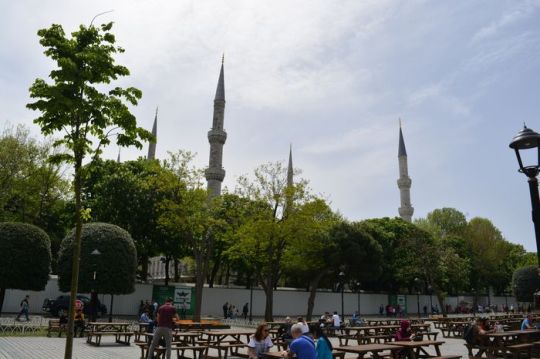
Graves decorated with flowers
Besides, many of the survivors are women, who have made fruitless efforts to keep the bodies of loved ones covered with a little earth. We had ample proof that wherever bones could be identified, they were tenderly cared for. We saw many well- kept graves decorated with flowers.
We saw others that had been uncovered by the rain or the dogs, leaving parts of the skeleton exposed, that were still decorated with flowers. We even saw skulls lying on the ground, within a doorway or a garden wall, with a bouquet of flowers lying upon them, as though some one was caring for them, and was yet loth to bury them away out of sight. I saw one half buried, with the face upward, and its hollow eyes gazing reproachfully up at the sunny sky, with a bouquet carefully placed in its mouth ; but most of these skeletons and bones have nobody to look after them.
Of the eight or nine thousand people who made up the population of the place, there are only twelve or fifteen hundred left, and they have neither tools to dig graves with nor strength to use spades if they had them. But why have the Turkish authorities not buried them out of sight ? The Turkish authorities will tell you they have buried them, and that there were very few to bury Istanbul Private Tours.
Of all the cruel, brutal, ferocious things the Turks ever did, the massacre of Batak is among the worst! Of all the mad, foolish things they ever did, leaving these bodies to lie here rotting for three months unburied is probably the maddest and most foolish ! But this village was in an isolated, out-of-the- way place, difficult of access, and they never thought Europeans would go poking their noses here, so they cynically said, “ These Christians are not even worth burial, let the dogs eat them.”
We talked to many of the people, but we had not the heart to listen to many of their stories in detail, and we restricted ourselves to simply asking them the numberlost in each family. No other method would probably give a better idea of the fearful character of the massacre, and the way in which whole families were swept out of existence.
0 notes
Photo
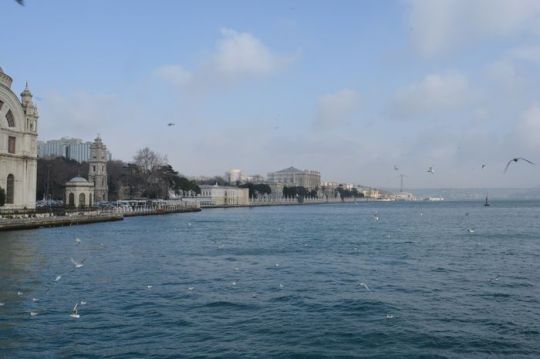
Chinill Kiosk
In 1888, consequent upon the discovery of twenty-one sarcophagi, some of which may be justly regarded as masterpieces of Hellenic sculpture, at Saida (the Sidon of the Ancients), Chinill Kiosk, in its turn, was found too small for the requirements of a museum, and an imperial decree was issued sanctioning the erections of special premises for the Saida sarcophagi opposite Chinill Kiosk. The new building was completed and inaugurated in 1892.
The most prominent by far of all the antiquities in the Constantinople Museum are those contained in the matchless collection of ancient monuments unearthed in Phoenicia. The greater part of these monuments, and the most important, were discovered in the vicinity of Saida, the Sidon of the Ancients, during two archaeological expeditions under Hamdl Bey, director of the Imperial Museum at Constantinople. His party succeeded in excavating and exploring two contiguous tumuli. One of these contained the anthropoid Egyptian sareophagus of Tabnith, King of Sidon. The other, consisting of seven chambers, contained seventeen sarcophagi, among which were those called ‘ the Weepers or ‘ Mourners ; the black stone one in Egyptian style; that said to be Alexanders, with three others in the same style; that called the ‘ Lycian ; the ‘ Satrap’s ’; two anthropoid sarcophagi, and a few plain ones private tour istanbul.
The best and easiest way of seeing the Museum is to begin from the room on the left of the entrance and which is :—
ROOM NO. 2
The Lycian Sarcophagus, No. 75.—This was discovered at Saida in 1887 by Hamdl Bey, and is of Paros marble. The head was broken in excavation ; but such of the fragments as have been recovered have been pieced together, and the monument has thus been partially restored. The colouring has almost entirely disappeared. The shape of this sarcophagus is one which is peculiar to Lycia, where numerous other monuments of its kind are to be found. It is evident that this stone coffin was acquired at second hand by some Sidonian magnate, and was used for him after his demise. The carvings at the head and foot represent en-counters between centaurs.
The figures at the foot represent two centaurs quarrelling about a hind; while those at the head illustrate an episode in a wrestling-match between centaurs and lapiths, the death of the hero Cseneus, who is represented lying under a heap of amphorae and fragments of rock. The figures on one of the sides are those of Amazons in four-horse chariots hunting lions; and those on the opposite one represent a party of mounted men at a wild boar hunt. The symmetrical arrangement of the figures on both sides of this sarcophagus is well worthy of notice.
This sarcophagus is contemporary with some of the finest Athenian sculptures, and belongs to the close of the fifth, or to the commencement of the fourth century B.C., the period when Lycia, becoming tributary to the Athenians, was influenced by Athenian art.
The Sarcophagus alleged to be Alexander’s.— This sarcophagus was discovered at Saida in 1887 by Hamdl Bey, and is of Pentelic marble; it is 10 feet 8 inches long, 5 feet 7 inches broad, and 8 feet 2 inches in depth. One of its corners was broken off in excavation, but some of the fragments have been recovered and put together, and the monument is now partially restored; a head, however, and some other fragments of the carved figures are still missing. The repairs to the horse’s hoof and to the arm of one of the hunters are ancient.
0 notes
Photo

THE VARNA TREASURE
31. THE VARNA TREASURE
The treasure was fortuitously found in Varna in 1961, during construction works, at the corner of Knyaz Boris I and Makedonia streets, 1,5 m be-low the today’s walking level. The spot is about 500 m north – east to the Late Antiquity fortress walls of Odessos, near the Roman necropolis of the town (AD 2nd – 3rd centuries). At the area of the find there is evidence of funerals dating from the 4th – 6th centuries.
It has been probably kept within a leather sa-chet and might have been part of a larger treasure
consisting of gold jewelry belonging to ecclesiastical or secular persons. The presence of additional artifacts and fragments suggests the treasure has been divided in two parts at least, and submitted by the Church or by Odessos authorities in the second half of the 6th – early 7th century to Barbarians (probably the Avars who invaded the Balkans in 580 – 582) in return for captives; the local bishop Martin attested to a similar initiative — in 544 he succeeded in receiving from Emperor Justinian a special privilege for the church community in town (Just. Nov. CXX, 4)
The treasure consists of eight objects or frag-ments of 22-carat gold, precious and semi-precious stones: pearls, garnet and malachite of a total weight of 417 g. They were produced in different periods between mid 5th and mid 6th centuries, using various techniques peculiar of the Early Byzantine goldsmith’s art as forging, engraving, chasing, filigree, granulation, incising, intaglio and encrustment. Some of the pieces were prob-ably fashioned in the imperial workshop of Con-stantinople, as the bracelets tour bulgaria, the incised diadem which is the only one known of its kind, and per-haps the necklace. The rest of the jewels were like-ly produced in the workshops of Odessos, which were very active in the course of 4th – 6th centuries.
31.1. DIADEM
Constantinople Second half of the 5th century Gold, pearls, green gems (emeralds?) 32,5 x 1,3 cm; 16,4 g
31.2. DIADEM A fragment Odessos 6th century Gold, opal, pearls, glass 19 x 1,3 cm; 40,8 g Varna, Regional Museum of History, lnv. N III 560
31.3. NECKLACE
Odessos
Late 5th – 6th century Gold, pearls, glass L. 25,6 cm; 25,6 g Varna, Regional Museum of History, lnv. N III 561
31.4. PECTORAL CROSS -ENCOLPION
Odessos 6th century Gold, garnet, malachite 7,3 x 5,2 x 0,75 cm; 37,5 g
Byzantium
Second half of the 6th century Gold, filigree, amethyst 3,9 x 2,5 cm Sadovets, Pleven region, discovered during archaeological research in 1934, in the vicinity of a Late Antiquity fortress together with 54 gold coins and 50 copper coins dating from the reign of Justinian (527 – 565) to Maurice Tiberius (582 – 602)
31.5. BRACELET
(the other one of the pair is now in a process of conservation) Constantinople 6th century Gold, pearls, glass, enamel 6,3 x 3,4 cm; 109,4 and 112,3 g Varna, Regional Museum of History,
0 notes
Photo

Phoenix Bazaar
Hairdresser’s salons are at the Phoenix Bazaar and near Hotel Trakia, Continental, Bourgas, Kouban and Rila, open from 6.00 a.m. to 9.00 p.m.
There is a round-the-clock taxi stand by the Palma Hotel Tel 291.
A car repair garage is at the back of Hotel Park (tel. 292). i he filling station, open day and night, stands where the road turns to Nessebur. The Rent-a-Car service is next to the Palma Restaurant. Tel.291.
Slunchev Bryag has many places of entertainment offering fine cuisine and interesting floor shows.
Variety Bar, the biggest and best night club in the resort, is between Hotels Olymp and Phoenix. It is open from 10.00 a.m. to 4.00 p.m.
Fregata Bar is a ship ‘stranded’ on the dunes in the southern part of the resort. Open from 10.00 a.m. to 3.00 p.m.
Roussalka Bar a night club with an excellent orchestra and floor show with Bulgarian and foreign artists. It is in the centre of the resort next to the Casino Restaurant city tours istanbul, open from 10 00 a.m. to 3,00 p.m.
Hanska Shatra — an original taverna built to resemble the tents of the old Bulgarian khans. During the day it functions as a restaurant, and at night offers an interesting floor show. Open from 11.00 a.m. to 2.00 a.m.
Chouchoura folk taverna — furnished in national Bulgarian style, serves local specialities, and drinks, folk orchestra. Open until midnigth.
Vyatama Melnitsa (The Windmill) — a folk taverna serving original Bulgarian dishes, cooked miller’s style. At night there is a fantastic view of the resort. Open from 11.00 a.m. to 3.00 p.m. and from 6.00 p.m. to midnight.
Ribarska Hizha
Ribarska Hizha — right on the beach near Hotel Vitosha, specializing in sea food. Music. Open until 1.00 a.m.
Kapitanska Sreshta — an old restored house in Nessebur, serves delicious food in a pleasant atmosphere. Open until 1.00 am.
Lozarska Kushta — an original restaurant in an old house in Nessebur. Open until 11 00 p.m.
The International Golden Orpheus Pop Festival is held at Slunchev Bryag annually in June. A Decade of Symphony Music is an annual feature at Bourgas, Slunchev Bryag and Primorsko Youth Centre. In July an International Folklore Festival is organized in Bourgas and Slunchev Bryag,
Trips are organized from Slunchev Bryag to nearby places of interest and to the interior. Excursions are also arranged to Mamaya in Romania, Istanbul. Moscow and Kiev.
Two swimming pools, indor and outdor, rilled with heated sea water are linked to Hotel Bourgas by a covered passage. The hotel offers physiotherapy treatment, massage, sauna and remedial exercises.
0 notes
Photo

Shoumen is Preslav
19 km south of Shoumen is Preslav (pop. 14,000) and a further 2 km south are the ruins of Veliki Preslav. During the reign of Tsar Simeon (893-927) the town was for a short time an important cultural and trade centre. It fell under Byzantine domination from 971-976 and from 1001-1187, In 1388 it was seized by Ottoman invaders and destroyed. It was rebuilt in the 16th-19th century north of the ruins and was called Eski Stamboul (the old capital). So far some 2 000 metres of fortress walls have been discovered.
Most of the remains have been uncovered including north and south gates, towers, palace compound, monasteries, workshops as well as two monasteries, several churches, cottages and other buildings from the 9th-10th century. In 1978 near the ruins of the palace compound, gold treasure was discovered comprising a necklace, rings, etc., the work of local masters.
Ten kilometres east of Shoumen, near the village of Mut- nitsa is the Madara National Historical and Archaeological Reserve with its magnificent bas-relief, cut into the rock of the ancient Madara fortress of a horseman followed by a dog and a lion pierced by a spear. The inscription beneath dates from the reign of Khan Omourtag (816-831). The Madara Horseman is one of four sites in Bulgaria (the Kazanluk Thracian Tomb, Boyana Church and Ivanovo rock churches near Rousse) to be included in UNESCO’s World List.
On the terrace below the relief are ruins of buildings from different eras — palaces, a Proto-Bulgarian heathen shrine (9th century), churches and monasteries from the late Middle Ages. Stairs cut into the rock lead to the Madara plateau and fortress, used until the Ottoman invasions. To the southwest, at the foot of the plateau, are remains of Roman houses and farm buildings.
10 km along the main E-70 road is Kaspichan and 6 km from there the ruins of the first Bulgarian capital of Pliska. The town was founded after the establishment of the Bulgarian state. In 811 it was plundered and burnt by troops of the Byzantine Emperor Nicephorus I. It was restored during the reign of the Bulgarian Khan Omourtag. After Pres lav was declared capital of Bulgaria in 893, Pliska retained its role as a major centre. In 1001 it was again seized by the Byzantines. The town fell into decay after the invasions of the Pechenegs and other tribes.
Pliska
Pliska covered an area of 23 sq km and was planned with a concentric fortification system. The town had two belts of fortifications: a rampart with moat and fortress walls with mo-numental gates and guard towers. Between the two fortification systems were the dwellings of the common people and many churches, while the houses of the boyars, temples and palaces were in the inner town sofia guided tours.
Some 1.5 km from the Eastern gate in the outer town are the ruins of the Great Hasilica. A tomb was discovered here in 1978 containing gold jewellery, probably the work of local masters.
4 km away along E-7Q is the town of Novi Pazar (pop. 17,0) which has glass, porcelain and glazed earthenWare in-dustries. A mediaeval necropolis was unearthed near the town.
Hanski Stan Motel, one star, petrol station.
40 km further on is the Iaige industrial centre ofDevnya (pop. 15,500). Here, during the reign of Emperor Trajanus (98-117) the Roman town of Martianopolis was founded near the Karst springs.
0 notes
Photo

KALOTINA DRAGOMAN SOFIA
ITINERARY
TOURS
KALOTINA-DRAGOMAN-SOFIA
The Kalotina border crossing point lies on the E-80 motorway on the Bulgarian-Yugoslav frontier some 55 kilometres from Sofia. Tourists entering Bulgaria can exchange money and shop at the Corecom hard-currency shop there.
The Cheshma service area is three kilometres from Kalotina along the motorway to Sofia. There is a 100 seater snack bar, a 60 seater restaurant, and a large Corecom shop daily tours istanbul. There is an exchange bureau and a kiosk for soft drinks, fruit and vegetables.
Dragoman
Dragoman (population: 3,700) is 18 kilometres from Kalotina. The town was built on a site which in Roman times was a stop-over for changing the Meldia horses and it was called Meldia up to the Middle Ages. There is a motel of the same name. It is a frontier-check-point for entry by train.
The Slivnitsa camping site near the town of Slivnitsa (population 8,000) is open from May 1 to September 30. Both Slivnitsa and Dragoman are famous for the bitter battles waged during the Serbo-Bulgarian war of 1885 In defence of the reunification and independence of Bulgaria. The two-star Krasnogorsk hotel here offers two suites and 58 double rooms, a restaurant, night club, a Corecom shop, an information desk and an exchange bureau.
Some 37 kilometres from Kalotina and 18 kilometres south-west of the centre of Sofia is the Sofia-West roadside motel with 170 beds. It has a restaurant, snack-bar, coffee- shop, petrol station, car service station and tourist office.
Bankya (population: 8,500), is situated 17 kilometres south of Sofia at an altitude of 650 metres. Bankya is one of Bulgaria’s best known spas and resort centres. The climate here is extremely mild and the thermal mineral waters have a temperature from 34° to 38° C. It is recommended for people suffering from cardio-vascular diseases, high blood pressure and neuroses with neurasthenic syndrome.
In June 1971 the World Health Organization declared Bankya a centre for post-medical specialization in cardio-vascular diseases. There are over 40 sanatoriums and preventive treatment establishments, as well as many rest houses. There are very favourable conditions for rest and recreation. In 1978 Bankya was incorporated into the metropolitan area. Shortly after leaving Bankya on the right-hand side of the road is the BANKYA camping site which has first class facilities and is open from May 15 to September 30.
Sofia (population: 1,200,000), capital of Bulgaria, is situated in the southern part of the picturesque Sofia Plain. Its suburbs spread along the alluvial terraces of the river Iskur and its tributaries — the Vladaya, Perlovets and Souhodol Rivers, and have reached the foot of Mount Vitosha and the Lyulin Mountains. Sofia is surrounded by a garland of mountains. Mount Vitosha, closest to the city, rises to the North, and has become the invariable backdrop of Sofia’s panorama. Back in the 19th century the Viennese geologist, Ferdinand Hochstetter said that Sofia and Mount Vitosha were as inseparable as Naples and Vesuvius. On the north side of the plain rise the rounded elevations of the Balkan Range; the Lozen Mountains are to the southwest and the gently sloping contours of the Lyulin Mountains to the southeast.
0 notes
Photo

BULGARIA HISTORICAL MONUMETS AND NATURAL SIGHTS
RILA MONASTERY
It is the most impressive architectural and historical monument in Bulgaria from the Bulgarian National Revival period, founded by the hermit Ivan of Rila in the 10th century after the adoption of the Christian religion by the Bulgarians. Far from the major roads, the monastery preserved the rights granted to it by the Bulgarian kings and repeatedly reaffirmed by the sultans. At the end of the 18th century, however, began the onslaughts of the Kurdjalis. The monastery was destroyed to be restored later, in the first half of the 19th century. Situated at an altitude of 1,147 m above sea level, it occupies an areaof 32,000 sq m and is surrounded with stone walls up to 2 m thick and up to 24 m high.
One of the best preserved architectural monuments of the monastery complex is Hrelyo’s Tower, which was built in 1335. It is 23 m high. On the fourth floor there was a small church, in which valuable mural paintings have been preserved, dating from the 14th century. The monastery church rises in the centre of the yard, the inner and outer decoration of which is the work of wood-carvers from the Samokov, Debur and Razlog schools, and the mural paintings were created by the talented Bulgarian icon-painter ZahariZograph.
Interesting are the guest rooms of the monastery, furnished by different towns and villages in the country and bearing their respective names: that of Koprivshtitsa, that of Pazardjik, etc. The Refectory is a rare piece of architecture with its hearths, arcades and vaults. In the monastery library there are more than 16,0 books, including many unique ones, scores of old printed books, gospels and lives of saints in beautiful bindings. In the museum there are old parchments private tour guide ephesus, icons, Hrelyo’s throne and the old door of Hrelyo’s Church – the work of talented wood- carvers of the 14th century. Of equally great interest is a cross – a crucifiction — which was made by Monk Raphael. The monk devoted 12 years of his life to making the cross, in the course of which he lost his sight, but the 140 biblical scenes incorporating more than 1,500 human figures arouse the admiration of visitors even today. On show in the ethnographic section of the museum are various objects and costumes, given as gifts by pilgrims from all parts of the peninsula.
Near the monastery there is an attractive restaurant run by Balkantourist (3rd class), which is open day and night. The Rila Monastery Camp Site and the Bor Camp Site can accommodate a total of 270 people.
Interesting excursions can be made from the monastery to the Partisan Meadow locality at the foot of the peaks Dvouglav and Iglata. A two hours’ walk leads to Brichebor Peak, a five hours’ walk – to the Dry Lake, and a six hours’ walk – to the Ribni Ezera (Fish Lakes).
The Rila Monastery is 123 km from Sofia. It is reached via the international highway leading to Athens; at Kocherinovo village a turning leads through the valley of the Rilska River to the monastery.
BACHKOVO MONASTERY
The second largest monastery in Bulgaria after the Rila Monastery. It was founded in 1083 by the Georgian Grigoriy Bacuriani and has been reconstructed several times. The only building which has come down to us from the time of its foundation is the two-storeyed church and ossuary.The murals of the church are a unique monument of Byzantine art from the period of the Comnenus dynasty.
The central church was erected in, the 17th century, during the Ottoman rule. At the beginning of the 19th century the monastery was extended and one more church was built, the murals of which were painted by Zahari Zograph.
The monastery lies south of Plovdiv and can be reached by a modern, partly paved and partly asphalted road (some 30 km). The road goes on further south as far as Pamprovo.
0 notes